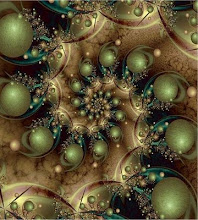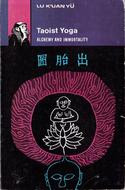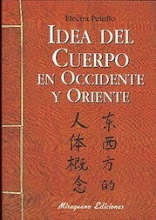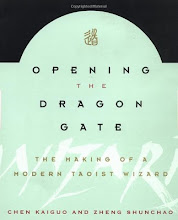Hace más de 50 años que no se lava ni se baña, salvo en el mar, claro.
No solo guia barcos , tambien es salvavidas humano. (habra salvado ya un centenar de personas en naufragios y tormentas
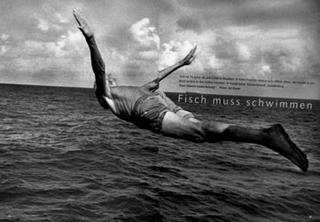
Al Noreste de Brasil se encuentra Atalaia, una hermosísima playa del puerto de Aracaju, la capital del Estado de Sergipe.
De pronto, un abuelo surge de la línea de rompientes como si fuera James Bond, sale corriendo del agua, pasa por delante de los atónitos comedores de langosta y toma un autobús con dirección al centro.
Por radio se entera de la llegada de un nuevo barco a Aracaju y se pone de acuerdo con el capitán de la nave en esperarlo a tal o cual hora a la altura de una boya faro, que la marina brasileña mantiene 8 millas mar adentro (unos 12 kilómetros ), frente a la playa de Atalaia. Y hacia allí es que se lanza nadando con la tranquilidad que proporciona la rutina, este increíble hombre de 74 años. Cuando por fin alcanza el meeting point, trepa al artefacto flotante, se aferra a él y espera zarandeado por el oleaje que el mercante que solicitó sus servicios aparezca por el horizonte. Claro que, en ocasiones, llega con retraso... y entonces la cosa se pone fea; al menos, se pondría fe a para cualquier mortal en su sano juicio. Porque para Zé Peixe, en esos casos, la cosa sólo se pone incómoda. "He llegado a pasar noches enteras sentado en la boya", dice con naturalidad, "pero atado a un cabo", añade, como quitando importancia a la hazaña.
Cuando sube a bordo de un buque, en medio de cascos de protección, radioteléfonos y sistemas y navegación computarizados, Zé Peixer asemeja un cangrejo en una central nuclear. Lo primero que hacen los marineros es mirarle a los pies, para comprobar la veracidad de la leyenda: él siempre va descalzo.
En el océano, más que nadar, se abre paso furiosamente a través de las olas. Se orienta casi a ciegas; pocas veces mira hacia delante, hacia la costa. Porque no tiene tiempo. "Tengo que nadar sin parar ni un instante, de lo contrario jamás llegaría a tierra." Zé Peixe avanza con la cabeza siempre fuera del agua "para que no se metan las medusas en los ojos" y a un ritmo de trepidante: unas 2,000 brazadas por kilómetro.
La evidente pasión por el agua de Zé Peixe viene de antiguo. Una vez, cuando tenía sólo 3 años, "me caí jugando al río Sergipe, y bueno parece que ahí me quede".
Con la marea baja- toda la ciudad apestaba a pescado- el pequeño Zé se dedicaba a recorrer las malolientes marismas recogiendo cangrejos para contribuir a la modesta economía familiar. Como niño prodigio ya era conocido por todo Sergipe a la tierna edad de 10 años: en 1937 un capitán de fragata le vio nadar por el puerto "como un animal de mares" y decidió bautizarle con el apodo de Zé Peixe. La voz se corrió y a Pepe Pez ya nunca nadie le llamó José Martins.
Y en cuanto a su costumbre de andar siempre descalzo, únicamente se permite una excepción: cuando va a misa. Los domingos pedalea en su vieja bicicleta hasta la catedral, vestido con su traje negro y las mangas de los pantalones arremangadas hasta las pantorrillas.
En cuestiones de salud, Zé Peixe no conoce problemas. Es más, está como un toro, o mejor habría que decir, como un león marino.
Zé Peixe sigue viviendo en la casa, encalada de blanco, donde nació, apenas una cabañita de pescadores construida hace 150 años. Sobre una pared desconchada ha fijado con chincheta fotos de antiguos veleros como los que atracaban en su Aracaju del alma cuando era pequeño.
Y así es la vida de este hombre ejemplar al que cariñosamente todos por aquellos lares conocen como Zé Peixe, "Pepe Pez"...
José was a native from Aracaju, Brazil, where he practiced his profession from 1947.
Un práctico singular: José Martins Rubeiro
La revista brasileña “Embarque do Práctico” (marzo/julio de 1999) reprodujo de la alemana “Stern” el reportaje titulado “Zé Peixe” (José Pez) que por su originalidad resumimos a continuación.Sergipe es uno de los veintisiete estados o territorios en que se divide Brasil. Situado al noreste del país, su capital Aracajú con más de 300.000 habitantes, cuenta con un puerto en el Océano Atlántico que sigue manteniendo una notable actividad con no pocas dificultades en las operaciones de entrada y salida de los barcos.
Cuenta con el servicio de prácticos más modesto de Brasil, con tres profesionales, agrupados en una cooperativa. Ni siquiera disponen de una lancha que les lleve hasta los navíos que solicitan sus servicios, viéndose obligados a alquilar barcos dedicados a la pesca.
Pero el más singular de los “prácticos” es José Martins Ribeiro Nunes (1926) conocido como el “hombre pez”. Constituye toda una leyenda en aquellos parajes donde lleva más de 50 años desempeñando este oficio. A pesar de tan dilatada vida laboral no ha conseguido salir de la pobreza, al menos relativa, sintiéndose muy orgulloso sobre todo por las dos condecoracines concedidas por el salvamento de navíos en serias dificultades.
La revista Stern señala “José Martins queda por radio con uno de los grandes cargueros en encontrarse en una boya de la marina brasileña a 12 km. de la playa de Atalaia Dumpei, hasta donde acude nadando a esperar la llegada del barco. A veces tiene que aguardar toda la noche al retrasarse la arribada de la embarcación. Sube a bordo y semidesnudo ayuda al capitán, trabajando como un alucinado según Veja la conocida publicación brasileña, hasta atracar el buque en los muelles del puerto”.
Cuando los barcos abandonan Aracajú “el hombre pez” les acompaña por el canal hasta alta mar”. Un momento de gran espectación es cuando salta al agua como un pez volador con los brazos extendidos para volver nadando a una de las playas de la costa según la dirección y fuerza de las corrientes. Por esta circunstancia siempre sale de casa con unas monedas que lleva en un saquito atado a la cintura y que utiliza para pagar el medio de transporte cuando se aleja mucho de su domicilio.
 Un remolcador recibe el cabo de un buque.(Foto de Javier Carballo).
Un remolcador recibe el cabo de un buque.(Foto de Javier Carballo). Este hombre que pesa unos 58 kg. y tiene la piel extraordinariamente endurecida, vive en una sencilla casa construida hace 150 años. En realidad es un héroe popular al que dan un trato de excelencia, aunque solo se calza para ir a misa. Es frecuente que pongan su nombre a yates, habiendo concedido numerosas entrevistas a la prensa escrita y a la televisión.
En 1.937 le vio nadar un capitán de fragata diciendo que lo hacía “como un pez de los mares” llamándosele entonces por primera vez “Ze peixe”. El capitán de Porto Vinicius manifestó que “sólo nace uno como él (refiriéndose a José Martins) cada centenas de años”.
 Entrada de un buque en el puerto de Pasajes. Dos remolcadores facilitan
la operación.(Foto de Javier Carballo).
Entrada de un buque en el puerto de Pasajes. Dos remolcadores facilitan
la operación.(Foto de Javier Carballo).





 To practise photograph meditation, first you need a photograph of your own face with open eyes, not smaller than 12 x 10 cm. The photograph should be placed in front of you at the same height as your eyes, approximately 3 to 6 feet away, so that you can focus clearly on your open eyes in the photograph.
To practise photograph meditation, first you need a photograph of your own face with open eyes, not smaller than 12 x 10 cm. The photograph should be placed in front of you at the same height as your eyes, approximately 3 to 6 feet away, so that you can focus clearly on your open eyes in the photograph.  Eye to eye meditation is practiced in exactly the same way as photograph meditation (as described in the previous section), except that instead of looking at your own photograph, you sit opposite a partner and look into his/her yes.
Eye to eye meditation is practiced in exactly the same way as photograph meditation (as described in the previous section), except that instead of looking at your own photograph, you sit opposite a partner and look into his/her yes.  To practice sun meditation, beginners should start by looking at the rising sun early in the morning. You can also look at the setting sun, but it is not as effective as at sunrise because the energy is decreasing.
To practice sun meditation, beginners should start by looking at the rising sun early in the morning. You can also look at the setting sun, but it is not as effective as at sunrise because the energy is decreasing.  When you can continue staring at the sun for ten minutes, the sun will seem to disappear. The inside of the sun will appear as blue sky surrounded by a ring of light, it will sometimes appear as two suns, sometimes rotating clockwise or anticlockwise. As your concentration develops and you can gaze at the sun for longer, you will be able to see a 'black spot' in the middle of the sun. Sometimes this black spot will be bigger, at other times smaller. After practice, the black spot will remained fixed in one place. Suddenly, from this black hole, seven colours will emerge and move around the sun, sometimes clockwise, sometimes anti-clockwise. As your concentration increases, a powerful beam of light will come from the sun towards your body. In the beginning this beam of light will not touch the body, it will come towards you and then retreat back to the sun. Eventually, as your concentration improves, this light will touch your body and you will attain complete thoughtless condition. This is the start of the pratyaharam stage, and indicates the beginning of Sunyoga experience.
When you can continue staring at the sun for ten minutes, the sun will seem to disappear. The inside of the sun will appear as blue sky surrounded by a ring of light, it will sometimes appear as two suns, sometimes rotating clockwise or anticlockwise. As your concentration develops and you can gaze at the sun for longer, you will be able to see a 'black spot' in the middle of the sun. Sometimes this black spot will be bigger, at other times smaller. After practice, the black spot will remained fixed in one place. Suddenly, from this black hole, seven colours will emerge and move around the sun, sometimes clockwise, sometimes anti-clockwise. As your concentration increases, a powerful beam of light will come from the sun towards your body. In the beginning this beam of light will not touch the body, it will come towards you and then retreat back to the sun. Eventually, as your concentration improves, this light will touch your body and you will attain complete thoughtless condition. This is the start of the pratyaharam stage, and indicates the beginning of Sunyoga experience.  The next step, as the inner vibration increases and extends from the muladhara chakra at the base of the spine to the sahasradhara chakra at the top of the head. This is the dharana stage.
The next step, as the inner vibration increases and extends from the muladhara chakra at the base of the spine to the sahasradhara chakra at the top of the head. This is the dharana stage. 

